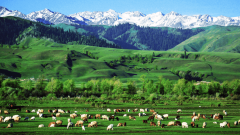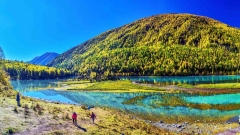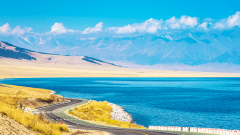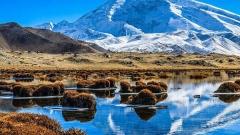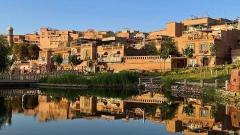Xinjiang, China’s largest province, spans a massive area filled with deserts, mountains, and grasslands. Due to its sheer size and unique geography, the region experiences extreme temperature shifts and distinct seasons. Whether you’re planning a trip to the ancient Silk Road cities or the stunning alpine scenery of the north, understanding Xinjiang’s weather is key to making the most of your visit.
Spring (March to May): Warming Up After a Long Winter
Spring in Xinjiang arrives later than in many other parts of China. In early March, temperatures can still be quite cold—especially in the mountainous areas and northern Xinjiang. However, by April and May, the weather becomes milder, with daytime highs ranging from 10°C to 20°C (50°F to 68°F).
Flowers begin to bloom in the Ili River Valley and southern parts of the region. It’s a great time to visit places like Kashgar, Turpan, or Urumqi, before the summer heat sets in.
Packing Tips: Bring layered clothing, a light jacket, and comfortable shoes. The desert areas can still be chilly at night.

Summer (June to August): Hot, Dry, and Sunny
Summers in Xinjiang are long, dry, and very hot—especially in southern cities like Turpan, where temperatures can soar to 40°C (104°F). Despite the heat, the dry desert climate makes it more bearable than humid coastal areas.
In contrast, northern Xinjiang—such as Kanas Lake and Sayram Lake—is pleasantly warm and lush, making it a popular summer destination for domestic travelers.
Packing Tips: Sunscreen, sunglasses, a sunhat, and breathable clothing are a must. Carry water when sightseeing in desert areas.
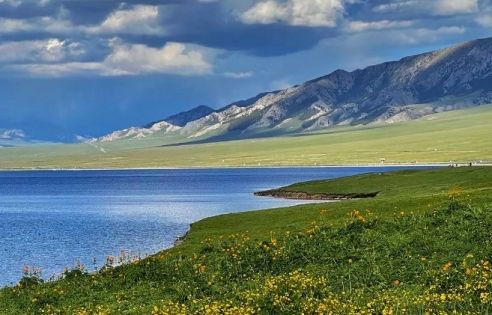
Autumn (September to November): The Golden Season
Autumn is widely considered the best time to visit Xinjiang. The scorching summer heat fades away, and the region turns into a palette of golden trees, red valleys, and crisp skies. Temperatures range from 10°C to 25°C (50°F to 77°F) in most parts.
This season is ideal for photography, hiking, and enjoying local harvest festivals. Kanas, Nalati Grassland, and the Tianshan Mountains are especially beautiful during this time.
Packing Tips: Light sweaters, a jacket for cooler evenings, and good walking shoes will keep you comfortable.
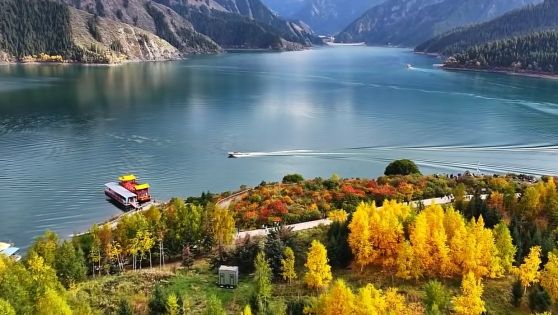
Winter (December to February): Cold but Magical
Winters in Xinjiang can be harsh, especially in the north and mountainous regions, where temperatures can drop below -20°C (-4°F). However, the scenery is stunning—think snow-covered peaks, frozen lakes, and fewer crowds.
For those interested in skiing, Altay and Tianshan offer excellent snow conditions and growing ski resorts. Urumqi and surrounding areas also host winter events.
Packing Tips: Heavy winter clothing, gloves, boots, and thermal layers are essential.

Regional Weather Differences to Note
-
Southern Xinjiang (e.g., Kashgar, Hotan, Turpan): Drier and hotter, especially in summer.
-
Northern Xinjiang (e.g., Ili, Altay, Kanas): Cooler and more temperate, with more rain and snow.
-
Mountainous areas (e.g., Tianshan, Kunlun): Weather can be unpredictable. Be ready for sudden changes in temperature.
Final Travel Tips
-
Desert temperatures change rapidly—warm in the day, freezing at night.
-
Always check the forecast before remote or high-altitude trips.
-
Some highland roads may close in winter due to snow or icy conditions.
-
Xinjiang has strong sunlight year-round—always wear sun protection.
Recommended Itinerary
9-Day Xinjiang Duku Highway Tour: Urumqi, Kanas, Hemu, Sailimu Lake & More
16-Day Xinjiang Panorama Tour: Urumqi, Heavenly Lake, Altay, Nalati, Tashkurgan, Kashgar & More




